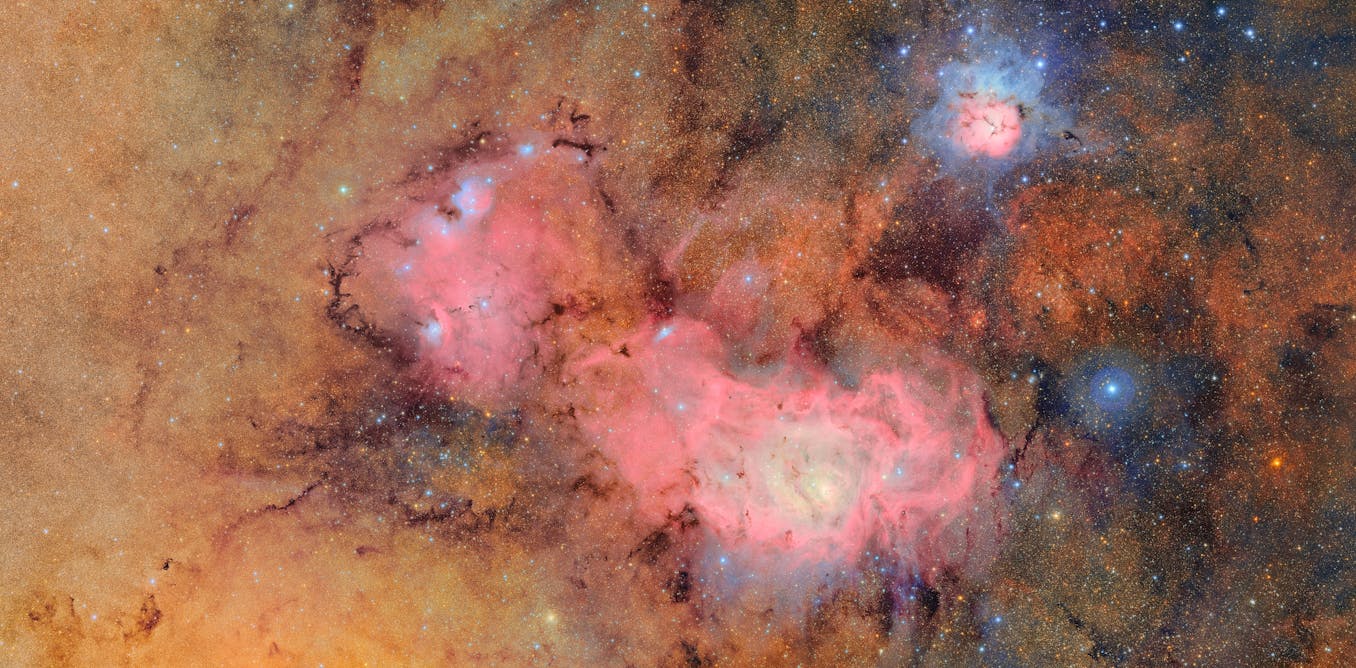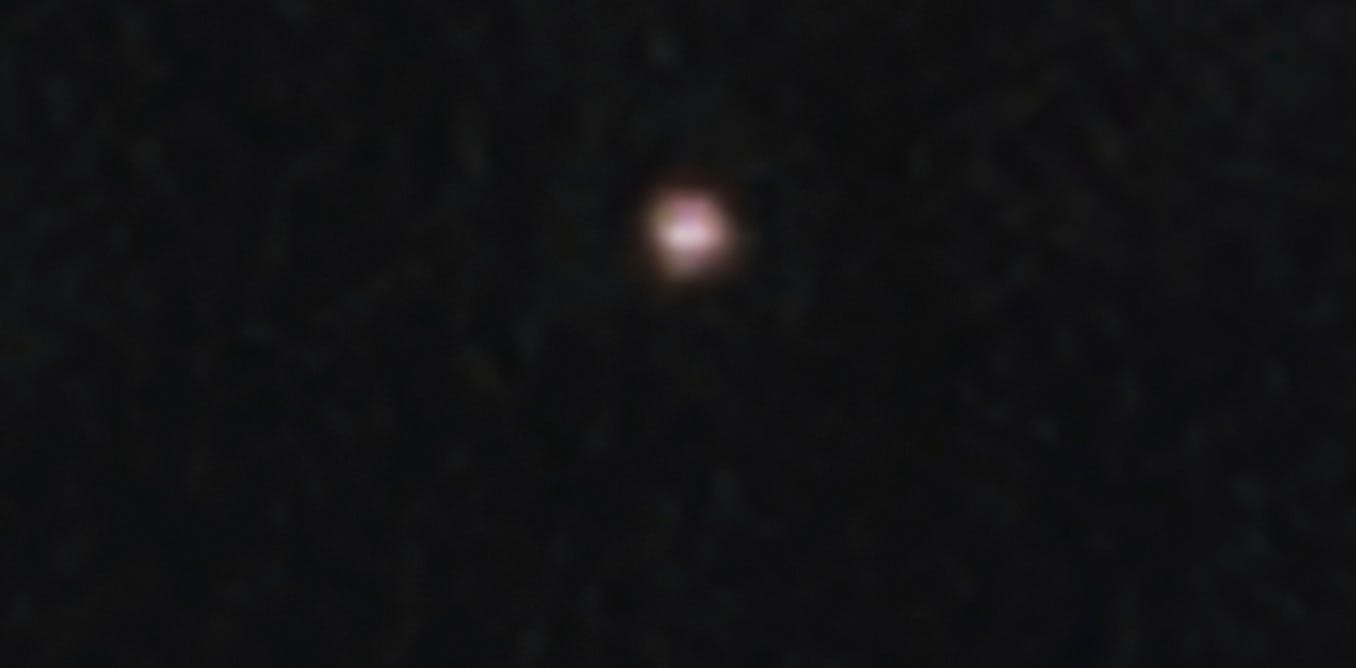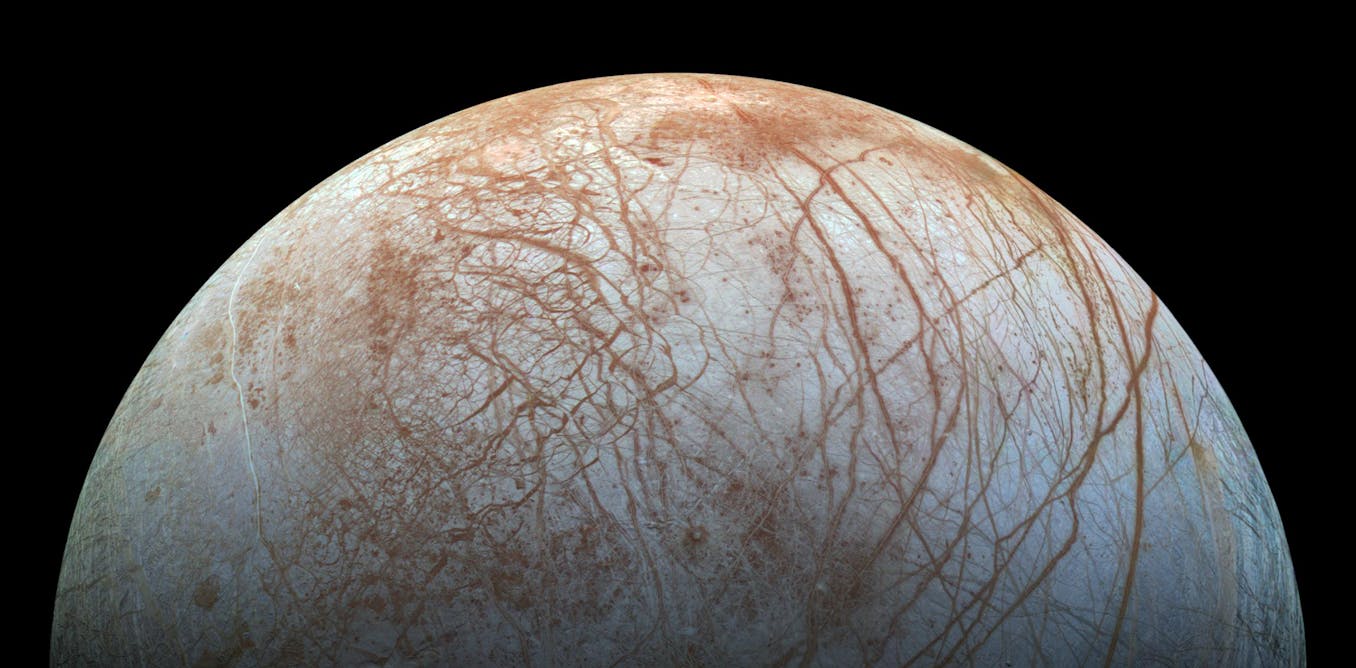How do scientists calculate the probability that an asteroid could hit Earth?
Keeping Earth safe from asteroids isn’t just spotting them – it’s also helping people understand what a high-impact probability with Earth means.
June 25, 2025 • ~6 min
The Vera C. Rubin Observatory will help astronomers investigate dark matter, continuing the legacy of its pioneering namesake
Vera C. Rubin’s research into stars in galaxies led to the modern understanding of dark matter.
June 24, 2025 • ~9 min
Astronomy has a major data problem – simulating realistic images of the sky can help train algorithms
To make a truly realistic fake picture of a galaxy, you can model exactly how light particles travel through the atmosphere and telescope to reach its sensor.
June 23, 2025 • ~9 min
Is Mars really red? A physicist explains the planet’s reddish hue and why it looks different to some telescopes
Mars isn’t a bright, fire-engine red, but the iron oxide in its rocks makes it appear redder than other planets, especially from afar.
June 16, 2025 • ~7 min
Where is the center of the universe?
As the universe expands, it feels like it must be spreading out from some initial point. But a physicist explains why that’s not how it works. Hint: space-time is involved.
June 10, 2025 • ~8 min
A new observatory is assembling the most complete time-lapse record of the night sky ever
The Vera C. Rubin Observatory will capture enough detail to see a golf ball from 25km away.
June 5, 2025 • ~6 min
New model helps to figure out which distant planets may host life
As NASA rolls out more powerful telescopes in the future, scientists will need a way to determine where to point them. A new approach could help.
June 2, 2025 • ~11 min
Do photons wear out? An astrophysicist explains light’s ability to travel vast cosmic distances without losing energy
The speed of light is the fastest anything can travel. What happens to a photon from a galaxy 25 million light years away on its journey toward Earth?
May 20, 2025 • ~6 min
/
20










